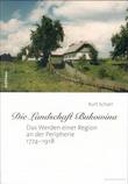Explore

Die Bukowina, seit 1775 zu den Ländern der Habsburgermonarchie gehörend, entwickelte sich ausgehend von einem politischen Konstrukt auf der Landkarte Europas im letzten Drittel des 18. Jh. hin zu einem durchaus selbstbewussten Kronland, dem es bis 1914 gelungen war, eine (staatskonforme) regionale Identität aufzubauen. Bis zum Ausbruch des Ersten Weltkrieges spielten nationale Rivalitäten eine gewisse Rolle, waren in ihren Forderungen jedoch als moderat einzuschätzen. Besonders die direkte Abhängigkeit dieses kleinen Landstrichs am Ostabhang der Karpaten von Wien als Reichshauptstadt legte den wesentlichen Baustein zu dieser Entwicklung. Eine Entwicklung, die v. a. auf innere Konsolidierung und Angleichung an die übrigen Kronländer der Monarchie gerichtet war. Erst die Folgen des Ersten Weltkrieges mit der Angliederung der Bukowina an das Königreich Rumänien legten die tatsächliche Bedeutung dieses so mit dem Zentrum der Monarchie verflochtenen Kronlandes, das von seiner Brückenstellung profitiert hatte, offen. Das Werden der Region Bukowina an der Peripherie eines europäischen Großreiches vom ausgehenden 18. bis zum beginnenden 20. Jahrhundert und die strukturelle Persistenz kulturlandschaftlicher Charaktereigenschaften sind zentraler Gegenstand dieser Arbeit. Der Brennpunkt liegt dabei in der Analyse raumwirksamer Gestaltungsprozesse sowie ihrer Genese – ausgelöst durch eine sich wandelnde geopolitische Situation. Spätestens seit der Mitte des 19. Jh. erwuchs für die Bukowina eine existentielle Spannung zwischen dessen eigener Positionsfindung, neuer Nationalstaatlichkeit und übergeordneter Ideologie des Gemeinsamen, dem Aufbau regionaler Identitäten, eigenständigem Landesbewusstsein und nationalen Forderungen. Die vorliegende Studie versucht insgesamt – abseits jener über weite Strecken des 20. Jh. bestimmenden Vorgaben national segmentierter Erkenntnisgerichtetheit – ein in der bisherigen Beschäftigung mit der Bukowina weniger bekanntes, auf eigenen Forschungen beruhendes Bild einer im Inneren vielgestaltigen Kulturlandschaft und ihre Genese zu zeichnen.
This book is included in DOAB.
Why read this book? Have your say.
You must be logged in to comment.
Rights Information
Are you the author or publisher of this work? If so, you can claim it as yours by registering as an Unglue.it rights holder.Downloads
- 199 - pdf (CC BY-NC-ND) at OAPEN Library.
- 203 - pdf (CC BY-NC-ND) at OAPEN Library.
- 199 - pdf (CC BY-NC-ND) at OAPEN Library.
Keywords
- Bukowina
- centre periphery
- Cultural Landscape
- Czernowitz
- Galizien
- Habsburg Monarchy
- History
- Humanities
- Rumänien
- state organisation
- thema EDItEUR::N History and Archaeology::NH History
- Ukraine
Links
DOI: 10.26530/oapen_437181Editions

